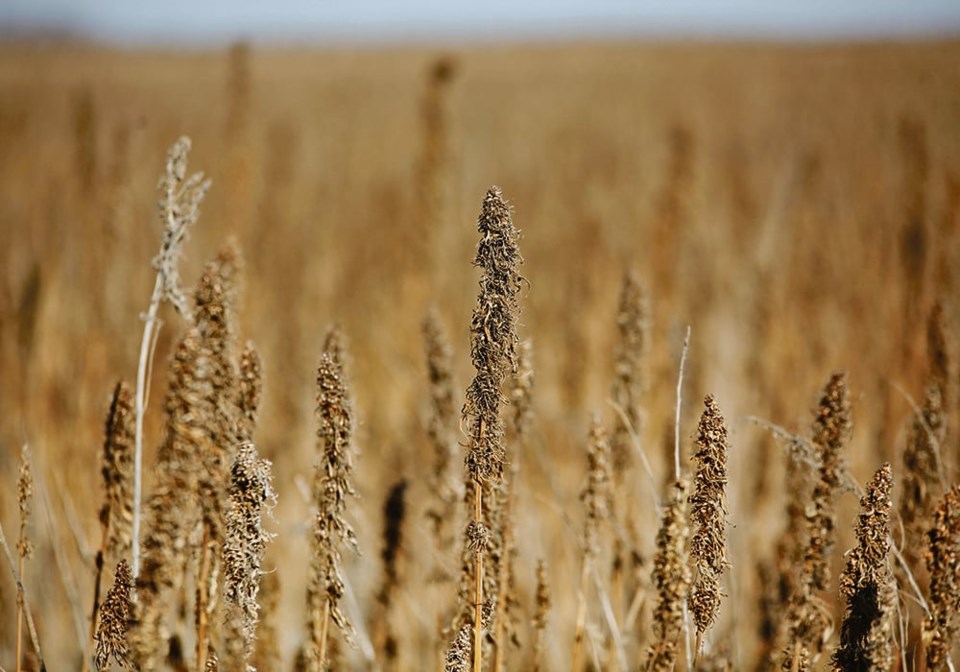WESTERN PRODUCER — After a few challenging years, Ken Anderson is feeling more hopeful about the U.S. hemp industry.
Seeded acres of industrial hemp have declined in recent years and the sector is still recovering from the CBD fiasco that saw many farmers lose money. Now credible companies are getting serious about hemp as a food ingredient or using hemp fibre in manufacturing.
“We’re starting to see some opportunities from larger corporations that want to use hemp in their products,” said Anderson, who runs Legacy Hemp in Prescott, Wisconsin. “I’m more optimistic now, because I see some of the real players coming in … that have the ability to make it do something.”
The situation is looking more positive because the hemp CBD craze has run its course.
From about 2017 to 2020, thousands of new players entered the hemp business in America, hoping to capitalize on claims that growing, processing and selling hemp CBD would become a massive industry.
A $10-$30 billion market was predicted for CBD, the cannabidiol found in hemp flowers, buds and tissue.
Some research suggested CBD oil can treat health problems including insomnia, inflammation and anxiety, and help with pain management.
Farmers across America planted hemp for the first time in 2018 or 2019, hoping to cash in on the opportunity. Acres exploded, going from almost nothing to 500,000 acres of hemp licenses in 2019. Not all of those acres were seeded, but many American farmers did try the crop.
“Before COVID, I was invited to Montana, to Pennsylvania, to New York State. For them, hemp was CBD,” Jan Slaski, a researcher and hemp expert with Innotech Alberta, an applied research organization with a research farm in Vegreville, Alta., said in 2021. “(Some) farmers in Montana put all their eggs in their CBD basket.”
That was a mistake. Hundreds of producers grew hemp but when it came time to sell their crop, there was no buyer.
“The CBD market … a lot of us were trying to warn people,” said Anderson, who has operated Legacy Hemp for a number of years. The company contracts with farmers and sells hemp grain into the food sector and hemp fibre to industrial clients.
Anderson and others are trying to push America’s hemp sector toward realism and pragmatism and away from the hype and mystique that surrounds the crop.
“A lot of the energy from the hemp realm, it seems like it is (focused)… on all of the things that hemp could do. (But) it doesn’t become real until hemp starts doing these things,” he said.
“When people aren’t focusing on buying hemp because it’s called hemp, but buying (it) because of the attributes and using hemp in other mainstream products … I think that’s when hemp wins.”
Anderson has been developing a decking board made from hemp fibre. The market for deck materials is worth billions — $13 billion to $20 billion annually — and Anderson believes hemp has a real opportunity in that market.
“Our product is all recycled plastic and hemp bast fibres. It performs remarkably well, with almost no thermal expansion or contraction, which is a huge thing in the composite industry.”
There may be an opportunity for Anderson’s decking board, but an opportunity is not the same as a functioning and successful supply chain.
“What a lot of these big companies are doing right now is establishing relationships with different organizations (to) help them in the supply chain.”
Anderson is optimistic that the farming, manufacturing and retail supply chains can be sorted out for hemp. But he is concerned that hemp promoters, once again, are putting the hype before the hard work.
“I see a lot of that happening in the hemp realm, right now, on the fibre side. Everyone has jumped over to the fibre opportunity …. Fibre is going to do this. Fibre is going to that,” he said.
“Where is this fibre going? This opportunity is not real unless there is a real buyer. … Right now, there aren’t huge-scale buyers for fibre.”
U.S. farmers will likely plant a small acreage of hemp in 2023; possibly similar to 2022, when about 20,000 acres went in the ground. Canadian farmers have seeded about 50,000 acres for the last few years.
Those thinking about growing hemp should think seriously about the market, Anderson said.
“(If) you’re putting seed in the ground, (make sure) you have a real buyer at the end of the day.”
Manitoba the major supplier of hemp to U.S.
This winter, the U.S. Department of Agriculture started publishing a weekly hemp report.
It contains information on retail prices and imports of hemp oil, hemp grain and hemp fibre. Manitoba is the primary supplier of hemp grain for food.
From Jan. 1 until the second week of April, America imported US$11.9 million worth of hemp grain.
Of that, about $9.9 million came from Manitoba.
Source: USDA hemp report




